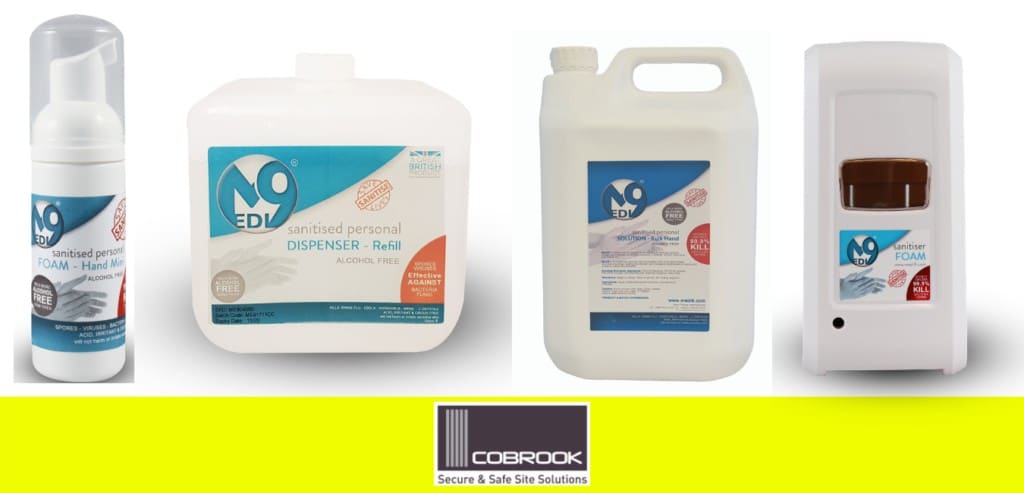
Guide to preventing tool theft from vans
Gutted. What else can you say? The ugly bend in your van door says it all. Another van break-in confirming the grim statistic that in

Our focus is to provide peace of mind with secure and safe site solutions for contractors in the construction industry. Part of our responsibility is to ensure that the products we offer have been carefully selected from market leading companies to provide you with the best.
So, when it comes to handling the storage of dangerous substances, in fact any workplace chemical, our focus is no different. Many chemicals, including waste chemicals awaiting safe disposal, have special storage requirements with temperature, time, or security restrictions and practical problems can arise. That is not to forget any risks to a worker’s health and safety whilst at their place of work is of the utmost importance.
Which is why we recommend following these 5 steps to ensure safe storage of your chemicals:
1. Identify the substances you are using
Honestly, this is the first and arguably the most important step in storing hazardous chemicals safely. If you do not know the type of chemical you have on hand, then how do you know how to treat it on your worksite?
You should be asking questions such as: Is the chemical flammable, toxic or corrosive? Is it self-reactive or does is react to sunlight? Is it incompatible with other substances? Can it negatively affect the environment or aquatic life?
To find the answers to the questions and many more you will need the Safety Data Sheets (SDS) provided by the manufacturer, importer, or supplier.
2. Assess the risks associated with the chemicals
Once you know what chemicals you are dealing with, you need to know if and why the chemical is dangerous. This will help decide where and how you store them in your workplace.
You should consider questions such as: is there a risk of fire or explosion? Does this chemical pose a risk of a gas leak and workers being asphyxiated? Is it corrosive with metal? Can it cause harm if it comes in to contact with workers? Are there any carcinogens?
Our suggestion is to utilise the COSHH Assessment Form and COSHH Risk Assessment Record to ensure that your chemicals are being handled in compliance with COSHH Regulations.
3. Control each of the risks
HSE Managers and Professionals use a system known as the Hierarchy of Control. The Hierarchy of Control is an international standard that you can easily implement into your workplace.
There are five control measures to consider, and each should be performed in the following order:
Elimination (could you stop using the chemical?)
Substitution (could you use a different chemical that is less harmful?)
Engineering controls (could you design the workplace to reduce the number of employees who are exposed to the chemical?)
Administrative controls (can you implement safe work methods?)
Personal Protective equipment (what protective equipment could be used to protect workers?)
4. Store the chemicals correctly
So, now that you know all about the chemicals that you have in your workplace, how do you store them in a safe and compliant manner? The HSE has strict guidelines on these practices, which you can download for free by clicking here.
We suggest that when deciding on the best method of storage you should begin with the chemical’s hazard class (ie, flammable, gas under pressure, oxidiser, explosive) and the specifications outlined on the SDS.
REMEMBER: Once all of your hazardous chemicals are stored you should conduct another risk assessment and review all your control measures to make sure no new hazards have been introduced to the workplace.
5. Setup a system to sustain compliance
While it can be a lengthy process to get underway, once you have a system in place it is necessary to ensure that your workplace remains compliant under COSHH Regulations. As workplaces are often in a state of flux, it is essential to ensure your safety and chemical storage procedures stay as to up to date as possible.
To help with your safety and storage endeavors, we have put together a concise page of downloads for free that you can access here.
Alternatively, you can contact our team at Cobrook Secure and Safe Site Solutions to discuss your situation and company needs.

Gutted. What else can you say? The ugly bend in your van door says it all. Another van break-in confirming the grim statistic that in

We have our differences. But in the UK’s battle against COVID-19 we are undivided. Our fight is not only against a disease. We must keep

£200m. The biggest investment in polar science for the UK since the 1980’s. Scientists expect this floating science lab, AKA RRS Sir David Attenborough to propel UK

How Safe Is Your Site? Safety on construction, refurbishment and industrial sites must always be taken seriously, as injuries can be life-changing or even fatal

Our focus is to provide peace of mind with secure and safe site solutions for contractors in the construction industry. Part of our responsibility is
24 Tesla Court
Innovation Way
Peterborough
PE2 6FL
Monday – Friday 7am – 5pm